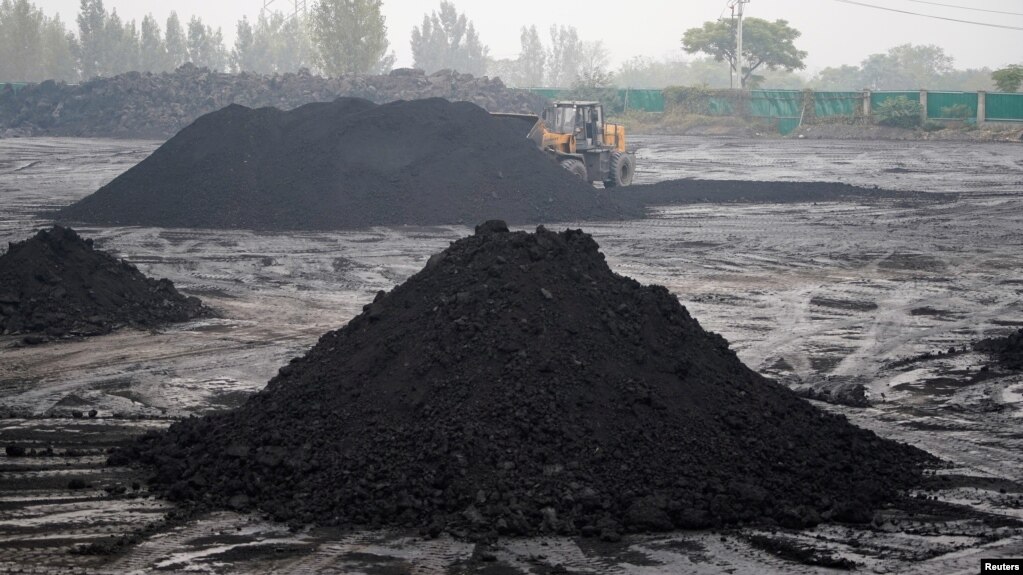
FILE – An excavator sifts through dunes of low-grade coal near a coal mine in Pingdingshan, Henan province, China November 5, 2021. (REUTERS/Aly Song)
China is planning to increase coal production by a reported 300 million tons this year. Observers say the government hopes such a plan will renew the country’s slow-growing economy.
However, critics say increasing coal production will hurt efforts to reduce climate-changing carbon emissions.
The amount of the reported increase would represent seven percent of China’s total coal production in 2021 — 4.1 billion tons.
China is one of the biggest investors in wind and solar energy. But recently its leaders called for more coal-burning power after economic growth fell last year. Power shortages caused power failures and factory shutdowns. Russia’s attack on Ukraine added to worries that foreign oil and coal supplies might be disrupted.
Coal is important for “energy security,” government officials said at an April 20 meeting that approved plans to expand production. That information was reported by the business news publication Caixin.
The ruling party also is building power plants to help grow China’s economy.
World governments have promised to try to limit warming of the atmosphere to 2 degrees Celsius above the level of pre-industrial times. Leaders say what they really want is a limit of 1.5 degrees Celsius.
Scientists say even if the world hits the 2-degree goal, the world still faces threats of higher seas, stronger storms and extinctions of plants and animals. Scientists also expect more people to die from heat, air pollution and infectious diseases.
China is the top producer and consumer of coal. The Chinese government has avoided joining other governments that promised to end the use of coal-burning power.
In a 2020 speech to the United Nations, president Xi Jinping said carbon emissions levels in China will reach their highest point by 2030. But he did not set a target for the amount. Xi said China aims to reach a state of carbon neutrality by 2060. In other words, it plans to remove as much pollutive carbon waste from the atmosphere as it adds.
China produces 26.1 percent of worldwide emissions. That is more than two times the U.S. share of 12.8 percent, according to the World Resources Institute. The research business Rhodium Group says China produces more than all developed economies combined.
China has large supplies of coal and produced more than 90 percent of the 4.4 billion tons it burned last year. More than half of its oil and gas is imported, and leaders see that as a risk.
China’s goal of carbon neutrality by 2060 appears to be on target. But Clare Perry of the Environmental Investigations Agency said using more coal could put that goal at risk, “or at least slow it down and make it more costly.”
Promoting coal will make emissions “much higher than they need to be” by 2030, Perry added.
China has spent tens of billions of dollars on building solar and wind farms to reduce dependence on imported oil and gas. China supplied almost half of worldwide investment in wind and solar energy in 2020.
Still, coal is expected to supply 60 percent of China’s power in the near future.
I’m Jonathan Evans.
Joe McDonald reported on this story for the Associated Press. Jonathan Evans adapted this story for Learning English.
____________________________________________________________
Words in This Story
emissions – n. the production and discharge of something, especially gas or radiation
solar – adj. of, relating to, or caused by the sun
disrupt – v. to interrupt the normal course of
extinction – n. the process of no longer existing
consumer – n. one that uses economic goods